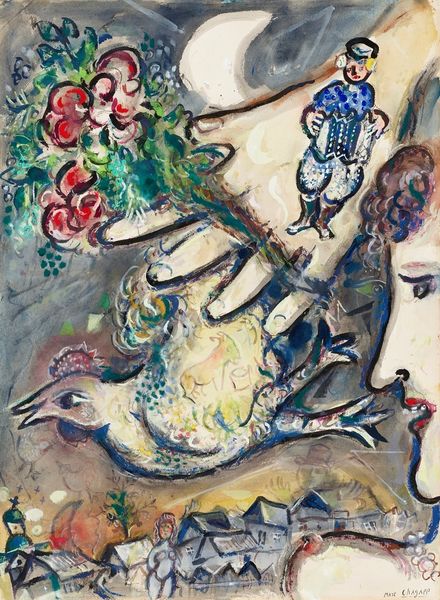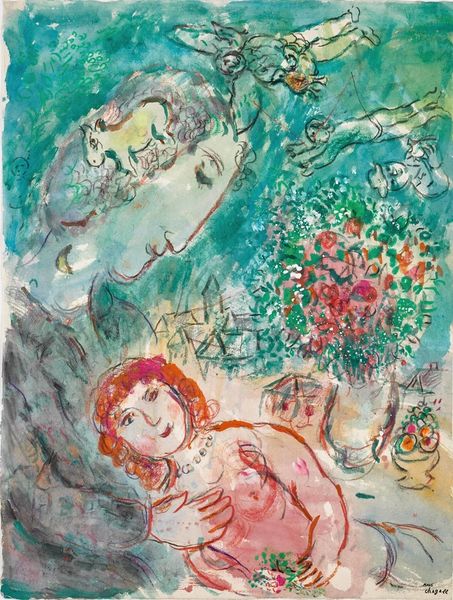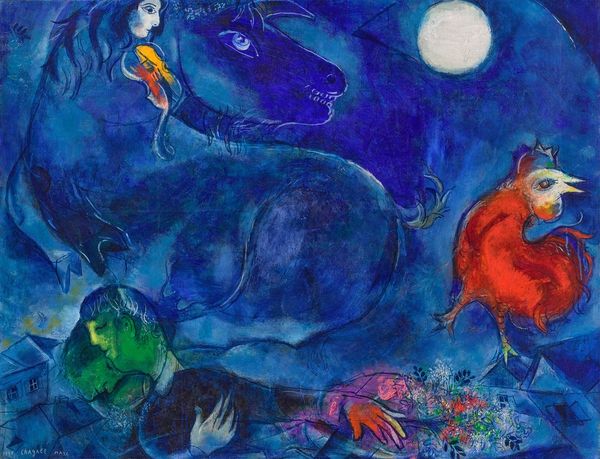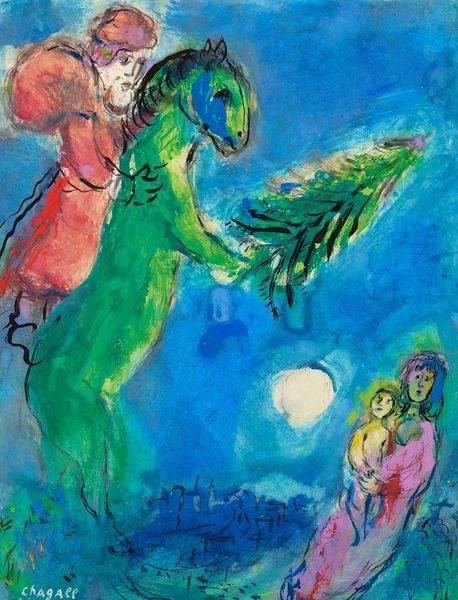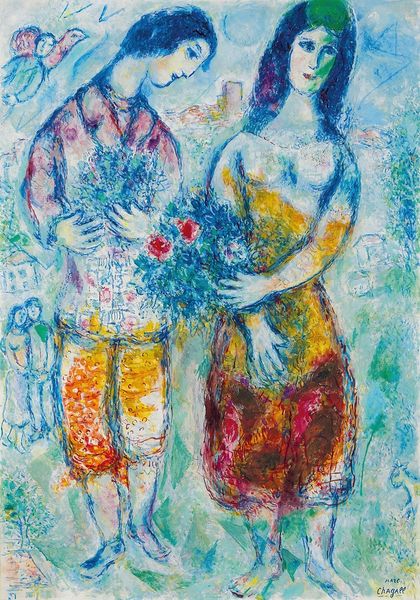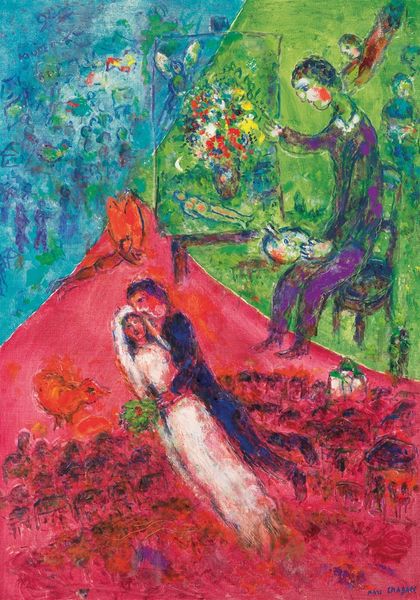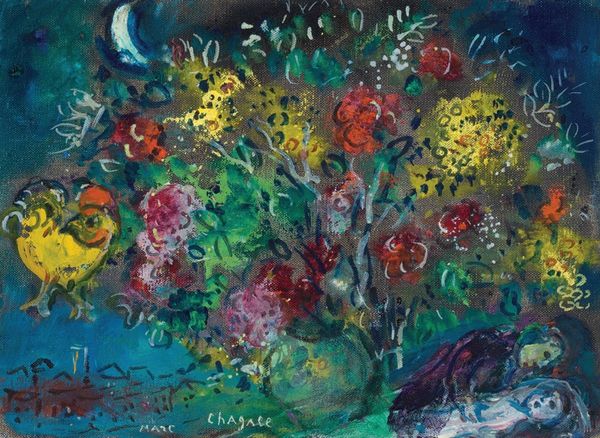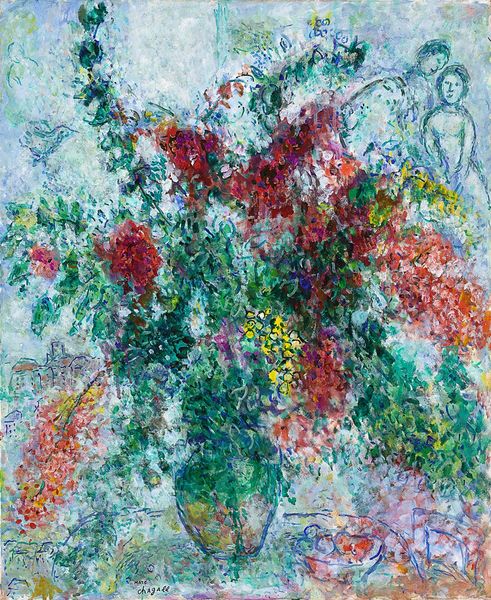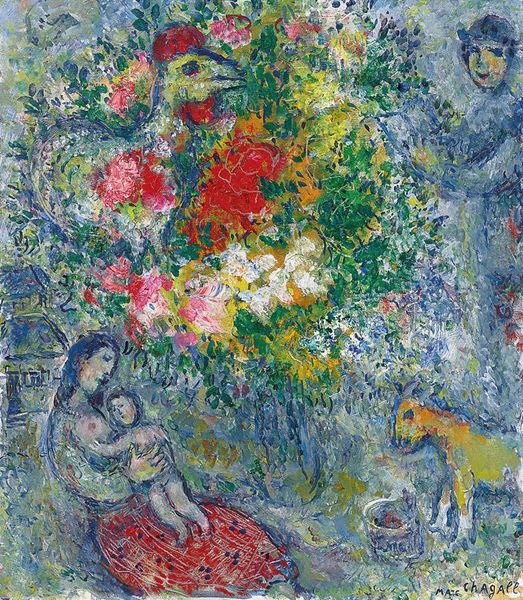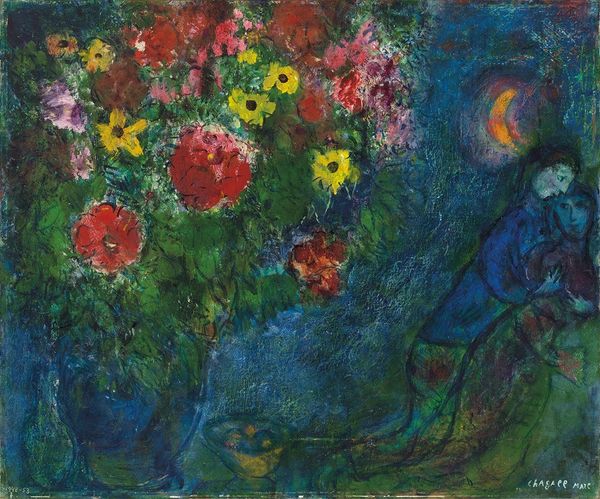
Copyright: Modern Artists: Artvee
Curator: Looking at Marc Chagall's 1950 painting "Bouquets d’œillets aux amoureux en vert" which translates to "Bouquets of Carnations with Lovers in Green". He renders the whole canvas with oil paint, layered in varying densities of green. What are your initial thoughts on this particular work? Editor: It's quite dreamlike, isn't it? A very intense and saturated emerald dominates, washing over figures and foliage. It gives off a sense of heightened reality. Slightly unsettling, perhaps? Curator: Unsettling is interesting. Chagall often utilized colour to convey emotion. Notice how the lovers on the left, meld with the green atmosphere? Green often symbolizes life, rebirth, but also envy or jealousy. What significance do you find in placing the figures almost ethereally within it? Editor: Perhaps the overwhelming green suggests that love, life itself, can feel all-consuming, maybe even stifling at times. And those vibrant carnations almost explode from the canvas. Carnations are rife with historical symbolism, they vary according to colour. What are we to infer here? Curator: Exactly, art is embedded within culture and visual language, it acts as cultural memory. Chagall's repeated use of lovers suggests the enduring power of love, which is frequently associated with carnal passion. What about that strange rooster at the bottom left? Does it disrupt, or add to the scene? Editor: Roosters can symbolize vigilance and pride, qualities often tested in affairs of the heart. Placing it there introduces a subtle tension, disrupting an otherwise sentimental image with a touch of stark reality, maybe the reality of social or domestic arrangements? And the setting with its ambiguous spatial relation seems suspended outside of reality. Curator: Agreed, these aren't individuals presented within social arrangements as we think of them through social documentation. Rather, they are eternal types that exist almost independent of historical events. Chagall lived through some tumultuous times so this painting feels somewhat resistant. It refuses the specifics of that era, and it emphasizes instead the timeless theme of love and nature. Editor: That’s an astute point. Maybe escaping the political climate gave his viewers the mental space for their own interpretations of those universal themes? Curator: Possibly! The act of resistance is often subtle. Looking closely is always worth our time. Editor: Absolutely, even amidst a wash of green. It seems the emotional weight rests in that enduring symbolic realm beyond immediate experience.
Comments
No comments
Be the first to comment and join the conversation on the ultimate creative platform.
